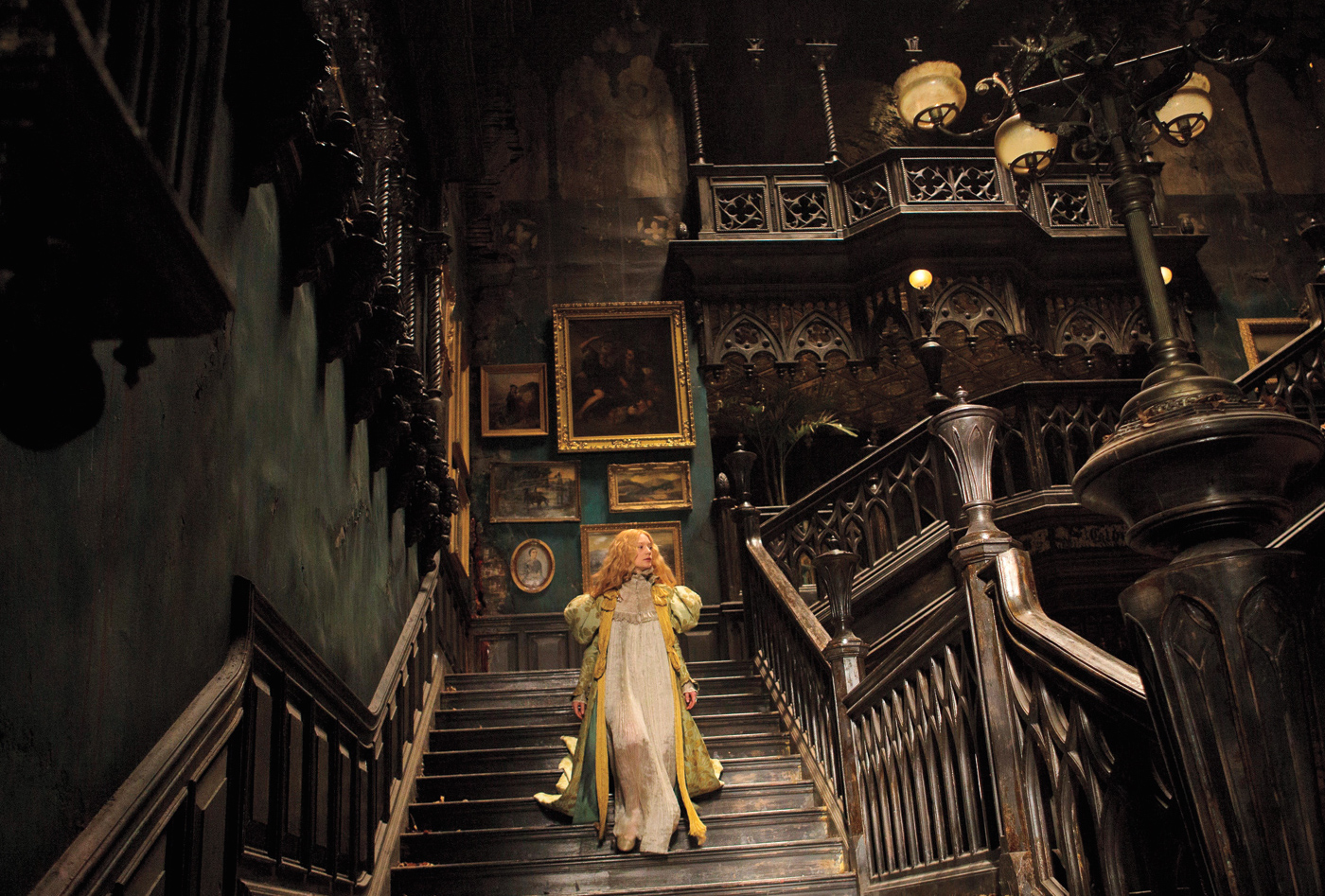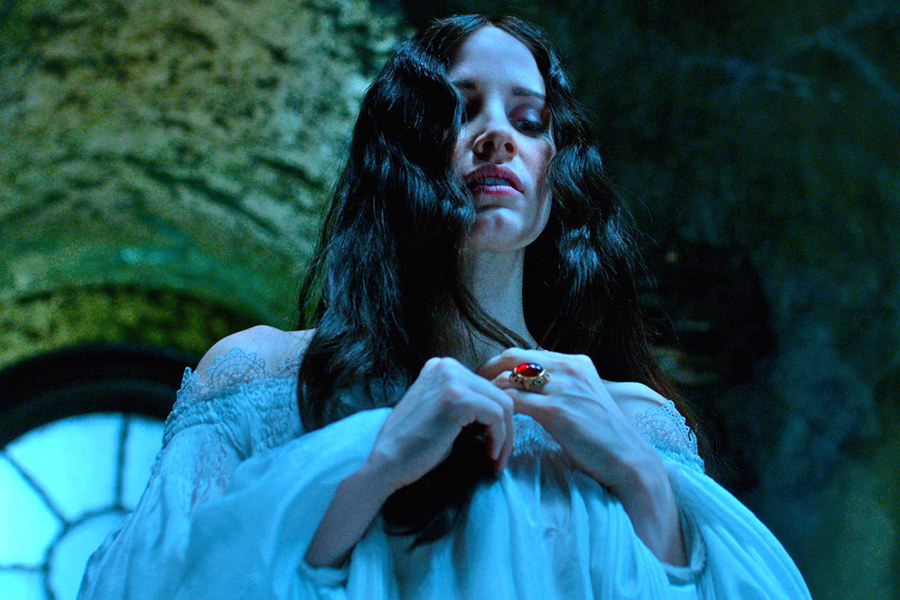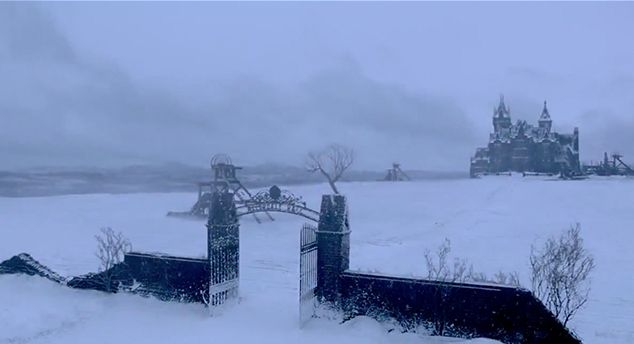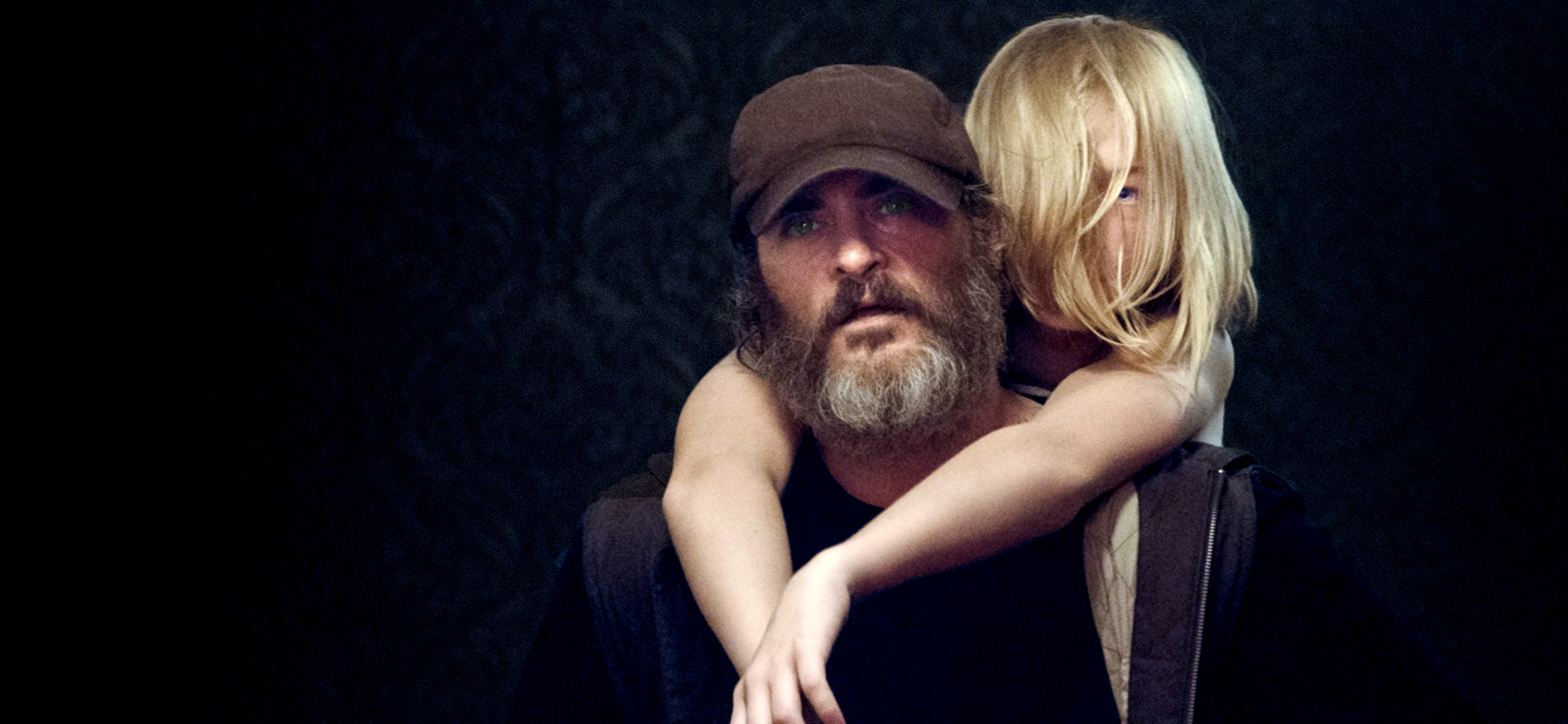
Guillermo Del Toro has been touting his gorgeously dark haunted period film for over a year now, and his fans are readying themselves to swoop down into theaters this weekend to finally see it from start to finish. We’ve seen costumes, environments, and a few creepy scenes, but is Crimson Peak going to be a new classic of the haunted house horror sub-genre?
As the posters will attest, Crimson Peak stars four of the prettiest people in Hollywood, Mia Wasikowska, Jessica Chastain, Tom Hiddleston, and Charlie Hunnam. Wasikowska plays Edith Cushing, a strong-willed writer and daughter of a wealthy American industrialist. She has the love of lifelong admirer Dr. Alan McMichael, (Charlie Hunnam) and her open-hearted yet protective father, Carter Cushing. When she encounters Baronet Thomas Sharpe (Hiddleston), she discovers she wants more. She wants passion and Thomas is the man to ignite it in her. It is an understatement to say that neither her pragmatic father, played by a scene-stealing Jim Beaver of Deadwood and Supernatural, nor Thomas’s dark, beautiful sourpuss of a sister Lucille, played by Jessica Chastain, approve. Even so, unfortunate circumstances bring Edith and Thomas together, and she moves with Thomas and his sister to their dilapidated yet massive mansion in England. There, secrets are slowly uncovered, as the ground oozes a clay that looks like fresh blood, and ghosts crawl up through the floors and out of the walls to alternately terrify and warn Edith of impending doom.
What is most striking about Crimson Peak is the opulent beauty present in every aspect of the production. The atmosphere and all that is constructed from the camera work to the sets and costumes become like another character, and that being so, it is without a doubt the star of the film. That beauty is winningly combined with believable performances, most notably by Chastain, who could have played Lucille as an over-the-top caricature, and walks the razor’s edge between commitment and camp. Those overwhelming positives still don’t make up for the predictability and derivative aspects of the film, which whisper to the audience as each new expectation is affirmed and proves a disappointing distraction from moment to moment.
Savvy suspense and horror fans will recognize both nods and influences of everything from Hitchcock’s Suspicion and Daphne Du Maurier’s Rebecca to Kubrick’s The Shining and Henry James’ 1898 novella The Turn of the Screw. Crimson Peak is very much a cinematic descendent of Hammer horror, with Edith Cushing even getting her sir name from the star of many of the Hammer films, Peter Cushing. At one point there is a direct quote from Jane Eyre used by Thomas as he speaks to Edith, and though one assumes that was intentional, it’s unclear given all the other overt references. Is Thomas the thief, is Del Toro, or are they both?
But wait! Since Del Toro categorizes his film into gothic romance, which he defines as “heightened melodrama combined with the dark atmospherics of a horror film”, does that not mean he must entirely commit to the genre, which has very clearly delineated, expected plot points? Whatever the reason Del Toro decided to follow a plot entirely devoid of surprises or twists, it requires the viewers to stay connected to the story even as it seems like a poem read so many times it is known by heart.
Visually, the film IS like a poem. It is so gloriously sumptuous and rich, it defies belief. One wonders if it were released 40 years ago, or it was a foreign film with the actors speaking entirely in Italian, whether the predictability of the film would cease to be an issue.
Indeed Crimson Peak is such a spectacular feast for the eyes, i’d like to mention the artists responsible. Production designer Thomas E Sanders, art director Brandt Gordon, set decorators Jeffrey Melvin and Shane Vieau, costume designer Kate Hawley, and cinematographer Dan Laustsen should all be filed out into view on camera and take a bow during the end credits like the actors did in 1956’s The Bad Seed.
The greatness and failure of Crimson Peak as a film are altogether at war with each other. As meticulous and methodical Guillermo Del Toro is, surely Crimson Peak as a finished film represents exactly what he had in mind. That being so, it is hoped that upon repeat viewing the film gains the weight and entertainment value robbed from it by being so predictable.
One metaphor used repeatedly in Crimson Peak is that of butterflies and moths, partly speaking of temporary beauty and decay, creation and destruction. Here it becomes an unexpected metaphor for the film itself. Is Crimson Peak a moth disguised at a butterfly or a butterfly disguised as a moth? Only time will tell.
C+








